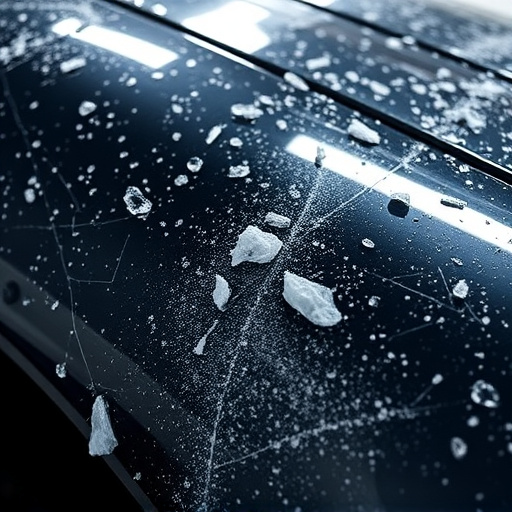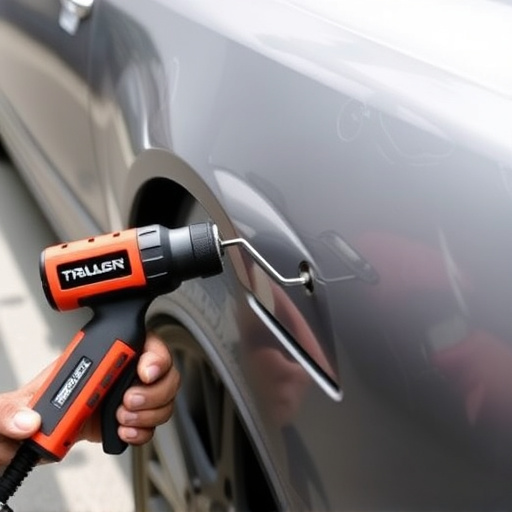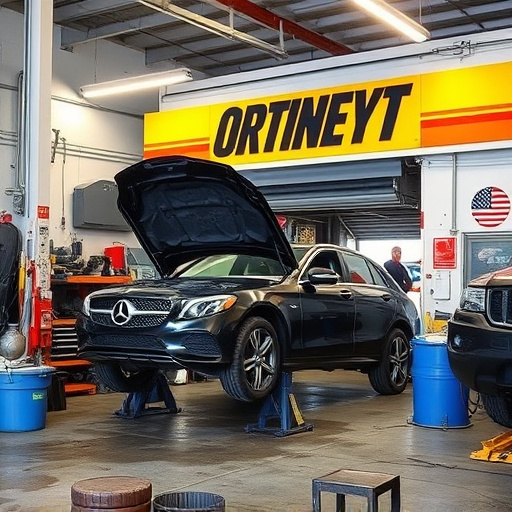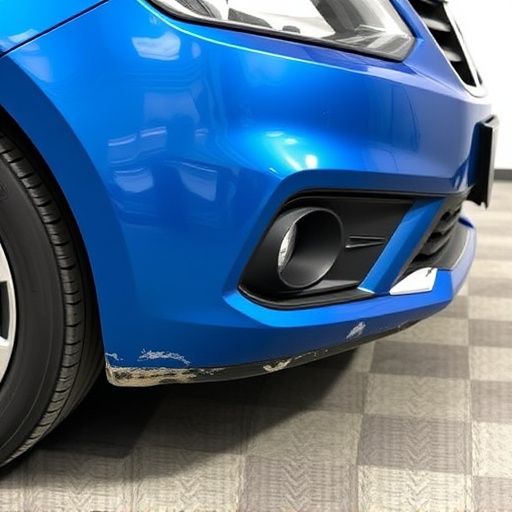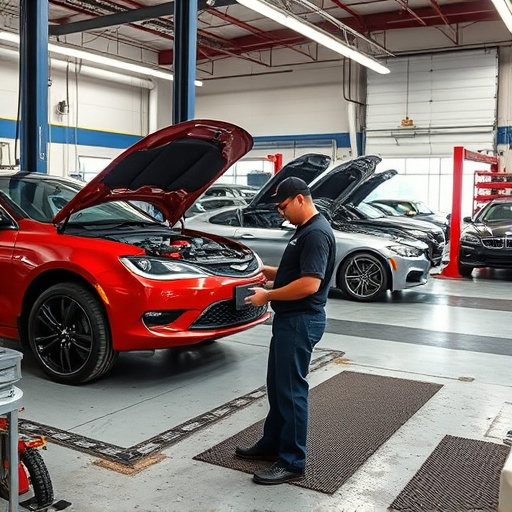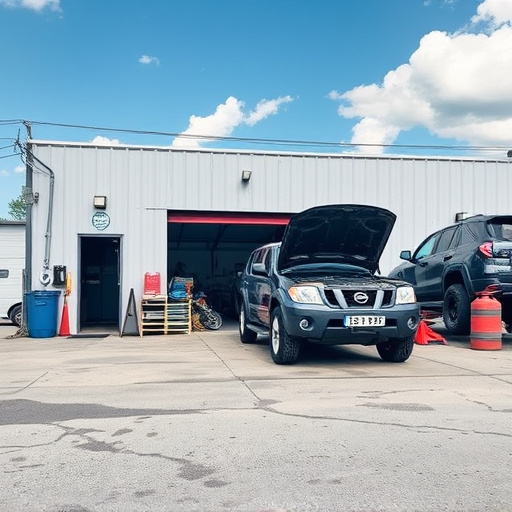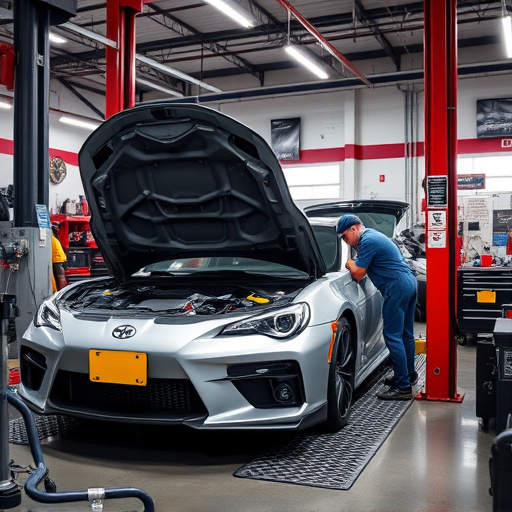Tesla electrical repair for models S, 3, X, and Y demands advanced knowledge of high-voltage systems, modular design, and specialized tools. Accurate diagnosis and efficient repairs ensure optimal performance and longevity, leveraging modern technology like CAD software and sustainable practices to meet growing demand for eco-friendly solutions "near me."
“Uncover expert Tesla electrical repair techniques tailored for the Model S, 3, X, and Y. This comprehensive guide navigates the intricate electrical systems of these electric vehicles, breaking down complex components and their functions. From identifying issues with advanced diagnostic tools to replacing faulty parts, we equip you with the knowledge for efficient repairs. Master these techniques to ensure your Tesla remains a reliable, high-performance vehicle.”
- Understanding Tesla Electrical Systems: Common Components and Functions
- Diagnosing Model S, 3, X, Y: Tools and Techniques for Efficient Repairs
- Advanced Repair Methods: Troubleshooting and Replacing Faulty Parts
Understanding Tesla Electrical Systems: Common Components and Functions

Tesla vehicles, including the Model S, 3, X, and Y, are known for their advanced electrical systems that power a wide range of features, from the iconic center touchscreen to regenerative braking systems. Understanding these intricate networks is crucial when it comes to Tesla electrical repair, ensuring that each component functions seamlessly. At the heart of these vehicles lies the electric powertrain, comprising motors, inverters, and battery packs, which work in harmony to provide efficient and powerful performance.
Common components include the High-Voltage (HV) battery system, responsible for storing and distributing electricity to various modules, and advanced control units that manage motor operations, regenerative braking, and overall vehicle dynamics. The electrical architecture is designed with modularity in mind, allowing for easier identification and replacement of faulty parts during automotive collision repair or frame straightening processes. Vehicle restoration enthusiasts appreciate the potential for precision repairs, ensuring these electric vehicles return to their optimal state while leveraging modern Tesla electrical repair techniques.
Diagnosing Model S, 3, X, Y: Tools and Techniques for Efficient Repairs
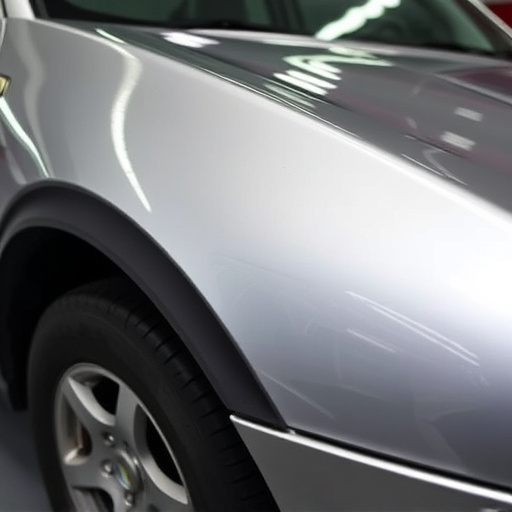
Diagnosing issues with Tesla models S, 3, X, and Y requires a specialized approach due to their advanced electric powertrains. Technicians should utilize diagnostic tools like OBD-II scanners compatible with Tesla vehicles to read error codes, track vehicle performance data, and identify problematic components. A comprehensive understanding of the car’s electrical systems is crucial; this includes knowledge of the battery pack, motor control units (MCUs), and power electronics.
Effective Tesla electrical repair involves a combination of technical expertise and specialized equipment. Collision repair services that cater to electric vehicles should be equipped with state-of-the-art tools for safely disassembling and reassembling complex systems while minimizing potential damage. A well-trained technician will employ techniques tailored to each model, ensuring accurate diagnosis and efficient repairs, ultimately contributing to a smoother and more sustainable ownership experience.
Advanced Repair Methods: Troubleshooting and Replacing Faulty Parts

When it comes to Tesla electrical repair for models S, 3, X, and Y, advanced techniques play a crucial role in ensuring optimal performance and longevity of these electric vehicles. Troubleshooting faulty parts requires a systematic approach, combining diagnostic tools with specialized knowledge. By utilizing modern technology, such as computer-aided diagnosis (CAD) software and high-precision instruments, auto body repair technicians can accurately identify issues within the intricate electrical systems of Teslas.
One innovative method gaining traction in Tesla electrical repair is paintless dent repair, which allows for the restoration of damaged panels without the need for extensive auto body repairs. This not only saves time but also preserves the vehicle’s original factory finish. Moreover, as the demand for eco-friendly solutions grows, many auto repair shops near me are adopting sustainable practices, ensuring that Tesla owners have access to both effective and environmentally conscious electrical repair services.
Tesla vehicles are renowned for their cutting-edge technology, including sophisticated electrical systems. By understanding the unique components and functions of Model S, 3, X, and Y, technicians can efficiently diagnose and repair issues using specialized tools and advanced techniques. This article has provided an in-depth guide to Tesla electrical repairs, empowering professionals with the knowledge to tackle common problems and ensure these electric vehicles continue to deliver their remarkable performance on the road.
